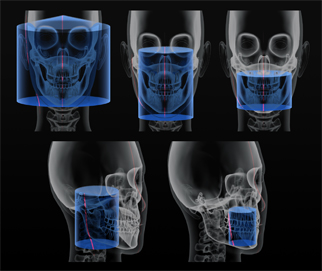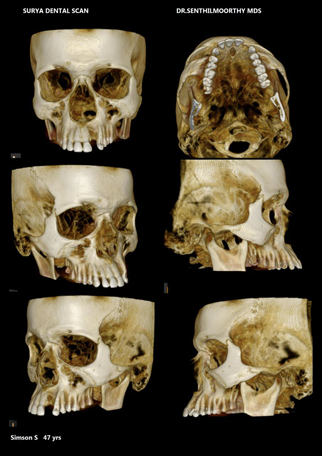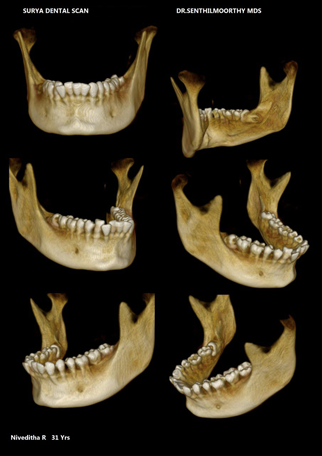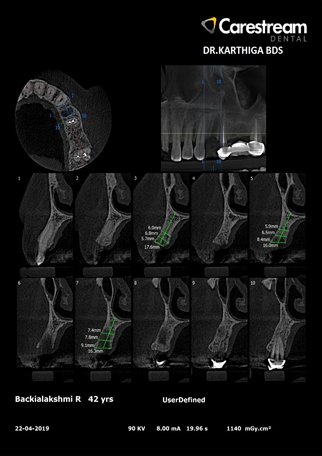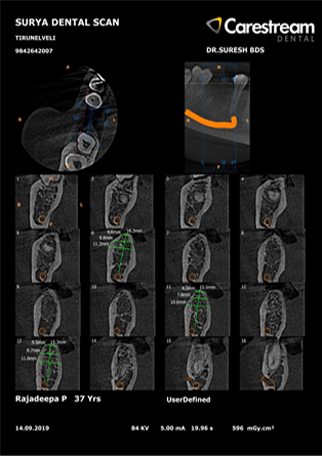Measure quality and density of bone.
Determine the precise three-dimensional position of a tooth within the alveolar bone and how this position relates to vital structures for extractions and impactions.
View bite in relation to bone structure for treatment plan.
Obtain a true 1:1 imaging of the condylar structures for more accurate assessments without superimposition and distortion.
Analyze periodontal bone defects on all sides of every tooth.
More accurate identification and diagnosis of periapical endodontic pathosis than conventional radiography.
Visualize an impacted tooth's position in relation to surrounding vital structures and nearby teeth and their roots.
CBCT scans provide a superior means of visualizing and studying pathological processes in the maxilla and mandible. This information is invaluable when planning any surgical efforts for biopsy or resection.
